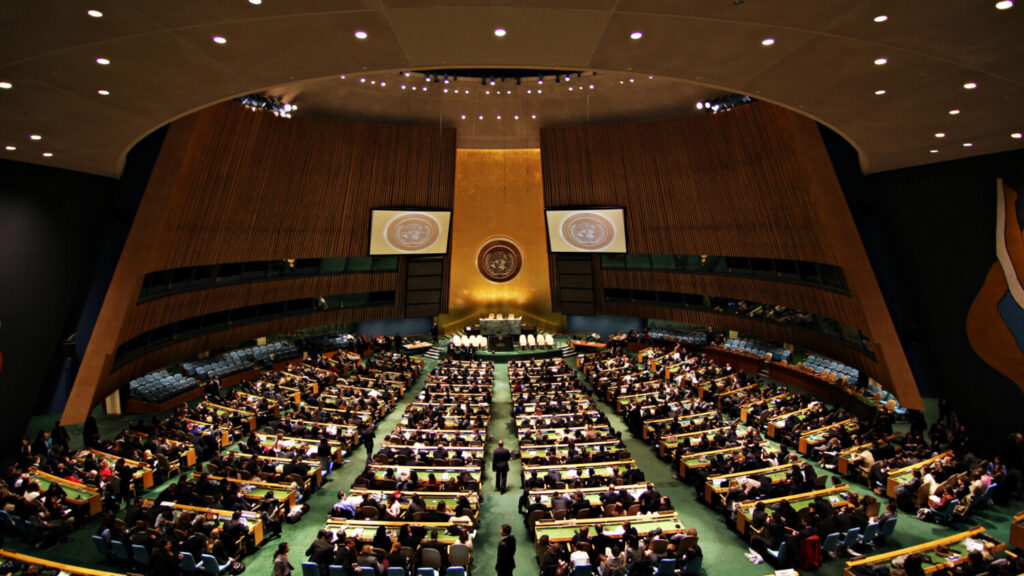The Strategic Ammunition Gap: NATO’s Industrial Lag Risks Deterrence
Russia’s full-scale invasion of Ukraine has exposed NATO’s industrial and strategic vulnerabilities. Despite the Alliance’s vast economic power, ammunition production and defence capacity remain insufficient for sustained conflict, risking a loss of deterrence credibility.
Russia’s invasion of Ukraine in 2022 and the return of large-scale conflict in Europe revealed structural flaws in NATO’s defence posture. The Alliance’s economic power, which amounts to approximately $50 trillion compared to Russia’s $2 trillion GDP, has not yet translated into corresponding defence industrial capacity. In just the first three months of 2024, Russia produced what NATO produced in an entire year, giving Russia a four-to-one advantage and thereby exposing a crucial strategic risk gap (NATO, 2025a). NATO Secretary General Mark Rutte has repeatedly warned members of the Alliance that Russia will likely pose a military threat by 2029, underlining the need to address this gap before deterrence credibility erodes (NATO, 2025a).
Russia’s Wartime Economy as a Strategic Benchmark
Since the beginning, the war in Ukraine has been defined by attrition and high ammunition expenditure, highlighting the critical importance of industrial output for military effectiveness. Russia’s defence industry, which shifted to a wartime footing in 2022, now represents the operational benchmark for NATO’s preparedness. Russian artillery production of 122mm and 152mm shells expanded swiftly from 0.4 million rounds in 2022 to an estimated 4.2 million annually by 2025. This growth was further supported by North Korean imports and sustained mobilisation (Jamestown Foundation, 2025b). As a result, Russia achieved a five-to-one firing advantage over Ukraine. Meanwhile, NATO members still struggle to meet Kyiv’s monthly requirement of roughly 356,000 rounds (CSIS, 2023).
Graph 1: Monthly Artillery Shell Output – Current Disparity and 2026 Parity Challenge
Russia’s 250,000 rounds per month, which might grow further, shows that even with NATO’s 2026 target of 267,000 rounds monthly, the Alliance would only reach parity—insufficient for credible deterrence (CNN, 2024; European Commission, 2024; US Army, 2025).
NATO’s Industrial Bottlenecks and Structural Weaknesses
It is not only the lack of funding that contributes to NATO’s ammunition gap; systemic industrial inertia has also played a significant role. Decades of underinvestment, offshoring, and dependence on “just-in-time” logistics left the Alliance ill-prepared for sustained warfare (CSIS, 2025b; Atlantic Council, 2025). Although output has increased since 2022, progress remains constrained by factors such as fragmented production and material shortages.
The United States leads the effort to reindustrialise its defence base. Artillery shell production had fallen to fewer than 3,000 rounds per month in the 2010s but had risen to 40,000 by 2024. Washington aims to reach 100,000 rounds per month, or 1.2 million per year, by the end of 2025 (Reuters, 2024a).
Europe follows with the Act in Support of Ammunition Production (ASAP), expecting to produce around 2 million rounds annually by 2025, almost a sixfold increase since 2022, thanks to industrial champions such as Rheinmetall, which alone targets 700,000 shells per year (European Commission, 2025).
Other NATO members have also joined the ramp-up effort. Countries including Norway’s Nammo, Türkiye’s MKE, and state-linked producers in Poland and Canada collectively contribute roughly 100,000 shells annually. Nevertheless, even with these combined efforts, NATO’s progress remains insufficient.
Europe’s industrial fragility stems mostly from its dependence on scarce raw materials. Explosives like TNT and RDX remain limited, with the continent relying on a single major TNT producer in Poland (Atlantic Council, 2025). Moreover, high-end systems face similar bottlenecks. For instance, the Patriot air defence network has delivery delays of up to ten years (CSIS, 2025a; Reuters, 2025). Several NATO members, such as France, Sweden, and the UK, have planned new powder plants to improve their situation by 2026; nevertheless, progress remains uneven. (EUISS, 2025; Atlantic Council, 2025).
Graph 2: NATO Ammunition Output vs. Russian Production
To ensure deterrence, which today relies less on technological superiority and more on production credibility, NATO’s $50 trillion economy must translate into sustained industrial power. Despite plans to expand air and missile defence capabilities (NATO, 2025), the ammunition shortfall remains the Alliance’s weakest link. In conclusion, NATO’s industrial base, fragmented and under-optimised, has yet to adapt to the demands of prolonged, high-intensity warfare.
Bibliography
- Atlantic Council (2025) Immediate steps that Europe can take to enhance its role in NATO defense. Available at: https://www.atlanticcouncil.org/in-depth-research-reports/issue-brief/immediate-steps-that-europe-can-take-to-enhance-its-role-in-nato-defense/
- Belga News Agency (n.d.) Belgium to launch largest ever ammunition investment with 2.3bn euro plan. Available at: https://belganewsagency.eu/
- Business Insider (2025) NATO Ammunition Production Targets and Industrial Bottlenecks. Available at: https://www.businessinsider.com/
- CNN (2024) Russia producing three times more artillery shells than US and Europe for Ukraine. Available at: https://edition.cnn.com/2024/03/11/politics/russia-produces-three-times-as-many-artillery-shells-as-us-and-europe-for-ukraine/index.html
- CSIS (2023) Ukrainian Innovation in a War of Attrition. Available at: https://www.csis.org/analysis/ukrainian-innovation-war-attrition
- CSIS (2025a) The Enduring Role of Fires on the Modern Battlefield. Available at: https://www.csis.org/analysis/enduring-role-fires-modern-battlefield
- CSIS (2025b) Overcoming the Barriers to Forward Deterrence. Available at: https://www.csis.org/analysis/overcoming-barriers-forward-deterrence
- European Commission (2024) Report on the implementation of Regulation (EU) 2023/1525 (ASAP). Available at: https://defence-industry-space.ec.europa.eu/document/download/d980180b-0749-45d5-b857-e7864adef4b2_en
- EUISS (2025) Rebuilding Europe’s Defences: How to unlock a coordinated defence surge. Available at: https://www.iss.europa.eu/sites/default/files/2025-09/Brief_2025-22_Cabilities%20gap_0.pdf
- Istituto Affari Internazionali (n.d.) EU Defence Industrial Initiatives: A Quantum Leap Is Needed. Available at: https://www.iai.it/en
- Jamestown Foundation (2025b) Russia’s War Transforms Ukraine into a World-Leading Military Producer. Available at: https://jamestown.org/program/russias-war-transforms-ukraine-into-a-world-leading-military-producer/
- NATO (2025a) Building a better NATO: Secretary General’s Pre-Summit Speech at Chatham House. Available at: https://www.nato.int/cps/en/natohq/opinions_235867.htm
- NATO (2025b) Produzione di Difesa e Sicurezza NATO: Discorso di Rutte. Available at: https://www.nato.int/
- Politico (2025) European TNT Supply Bottlenecks and Ammunition Production. Available at: https://www.politico.eu/article/europe-tnt-shortage-hampers-munitions-production/
- Reuters (2024a) Crisi di Proiettili in Ucraina: Errori NATO e USA. Available at: https://www.reuters.com/
- Reuters (2024b) Years of Miscalculations by U.S., NATO Led to Dire Shell Shortage in Ukraine. Available at: https://www.reuters.com/world/europe/nato-shell-shortage-ukraine-2024-03-15/
- Reuters (2025) Patriot missile systems face decade-long delays. Available at: https://www.reuters.com/
- RID – Rivista Italiana Difesa (2025a) Rheinmetall inaugura il più grande impianto di produzione di munizionamento europeo. Available at: https://rid.it/
- RFE/RL and Conflict Intelligence Team (CIT) (2025) Who Produces More Weapons—Russia or NATO? Available at: https://www.teletype.in/@citarticles/russia-nato-weapons-production
- US Army (2025) 155mm Artillery Production and Capacity Reports. Available at: https://www.army.mil/
- War on the Rocks (2025) Ukraine Artillery Supply and NATO Production Disparity. Available at: https://warontherocks.com/
- Western Defense News (2024) Ukraine says for every five artillery shells fired by the Russians they can only shoot back one. Available at: https://www.westerndefensenews.com/



